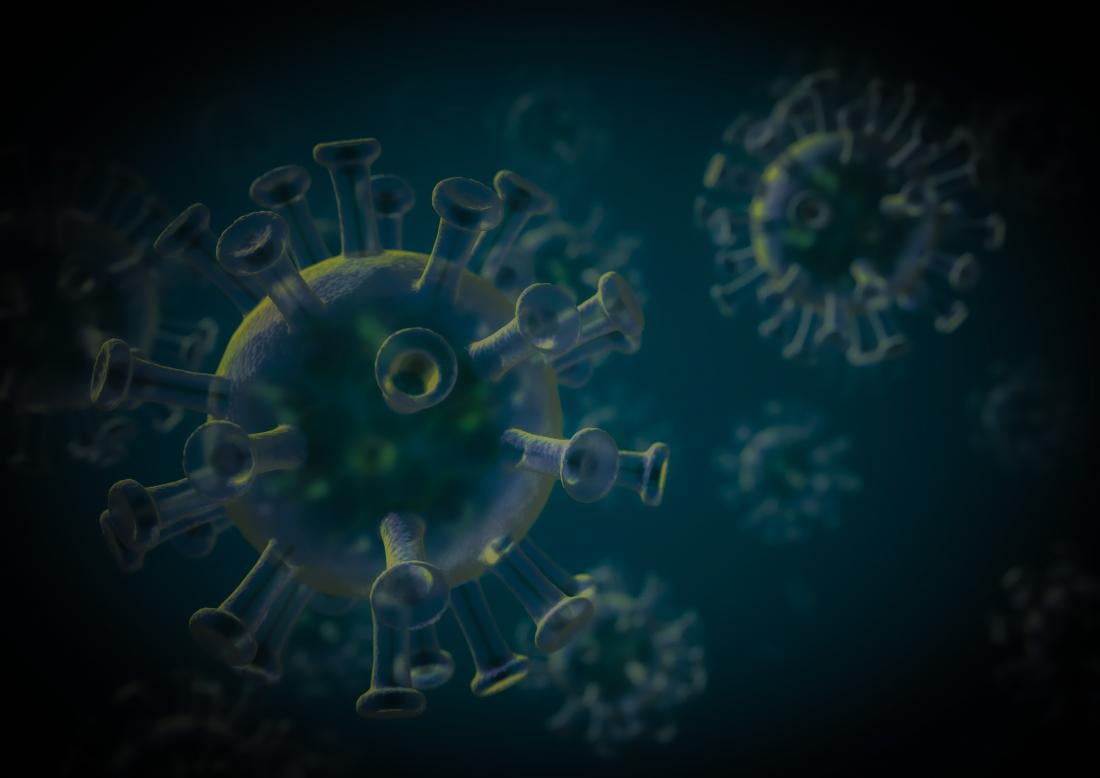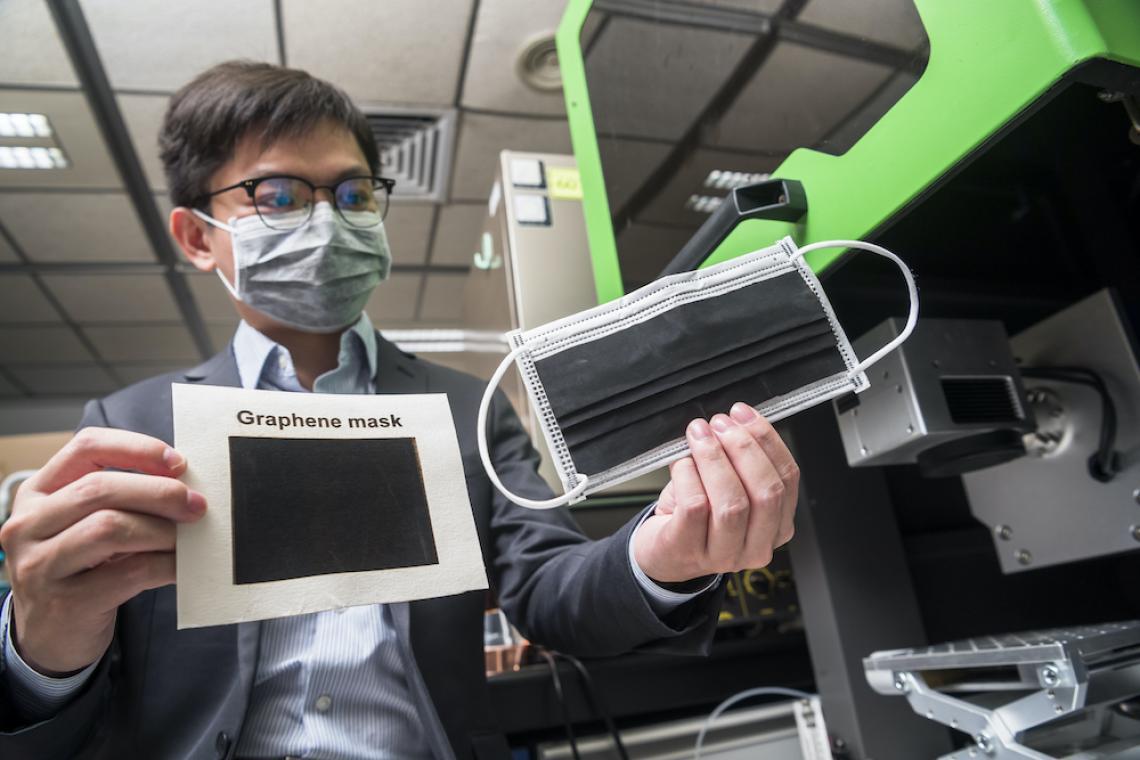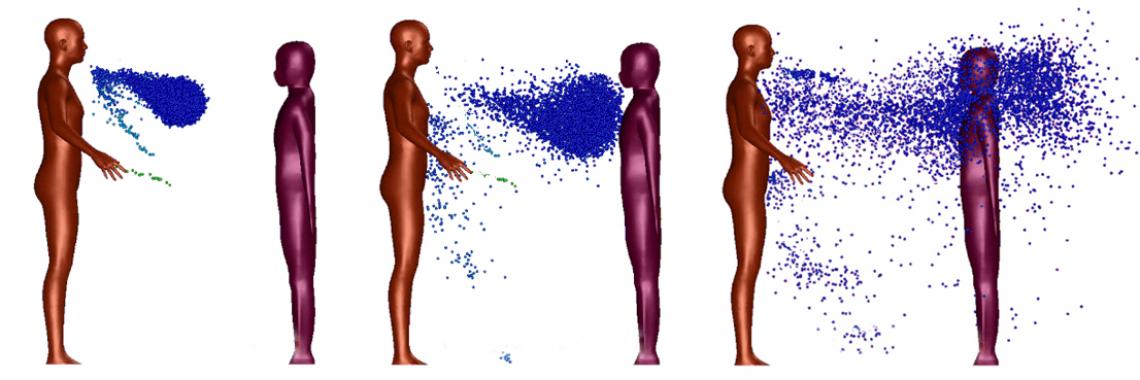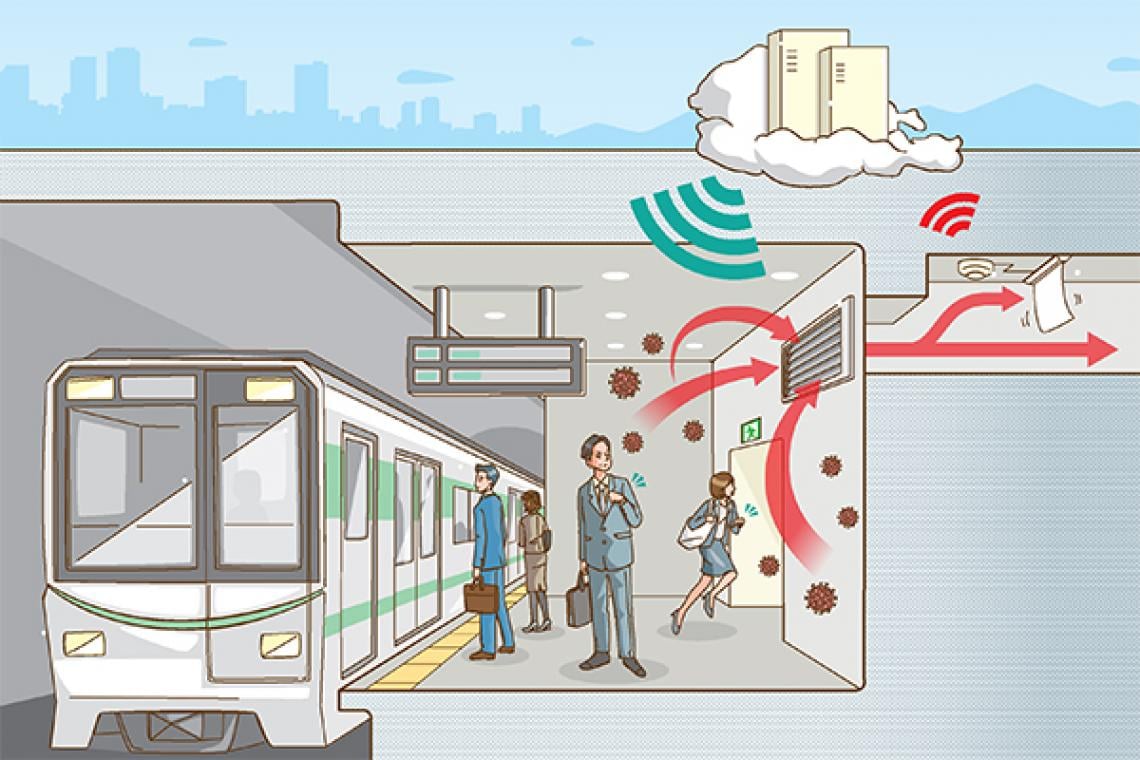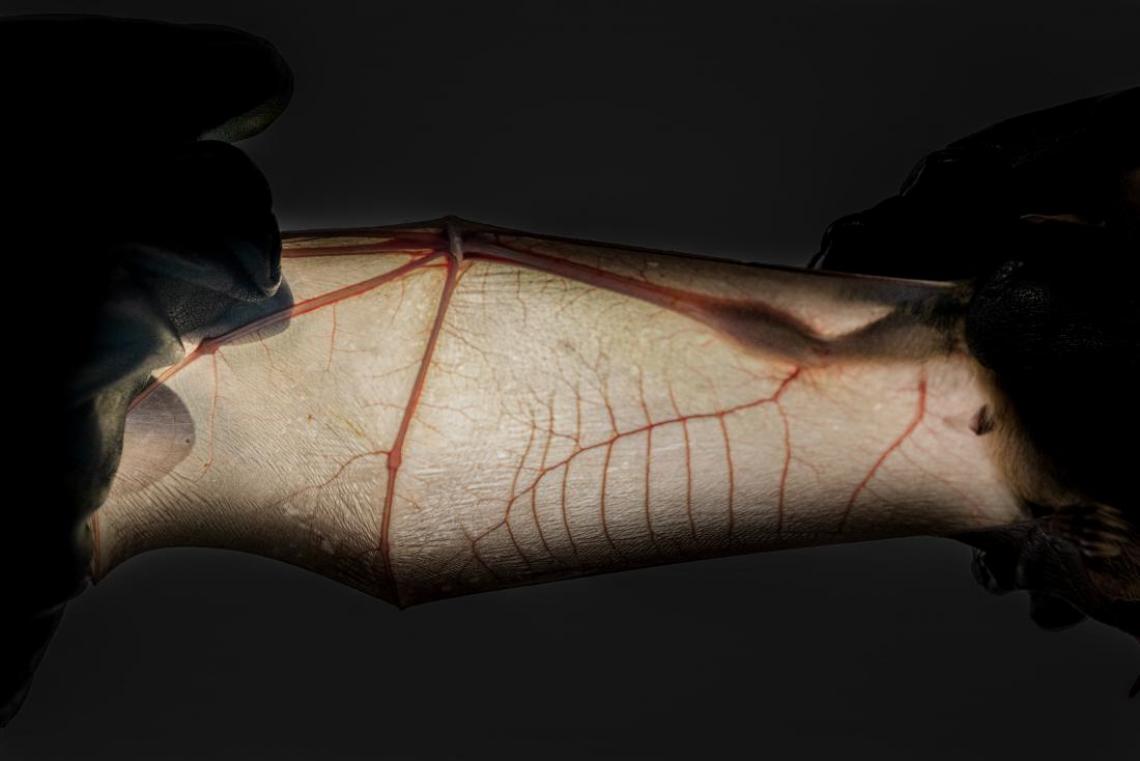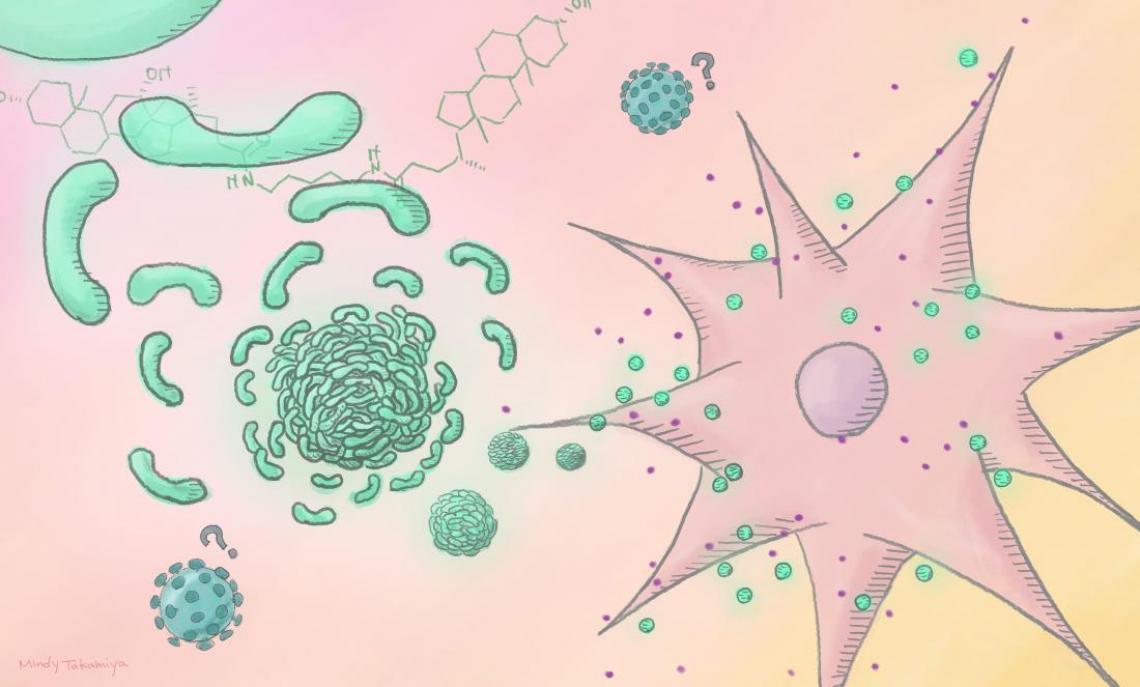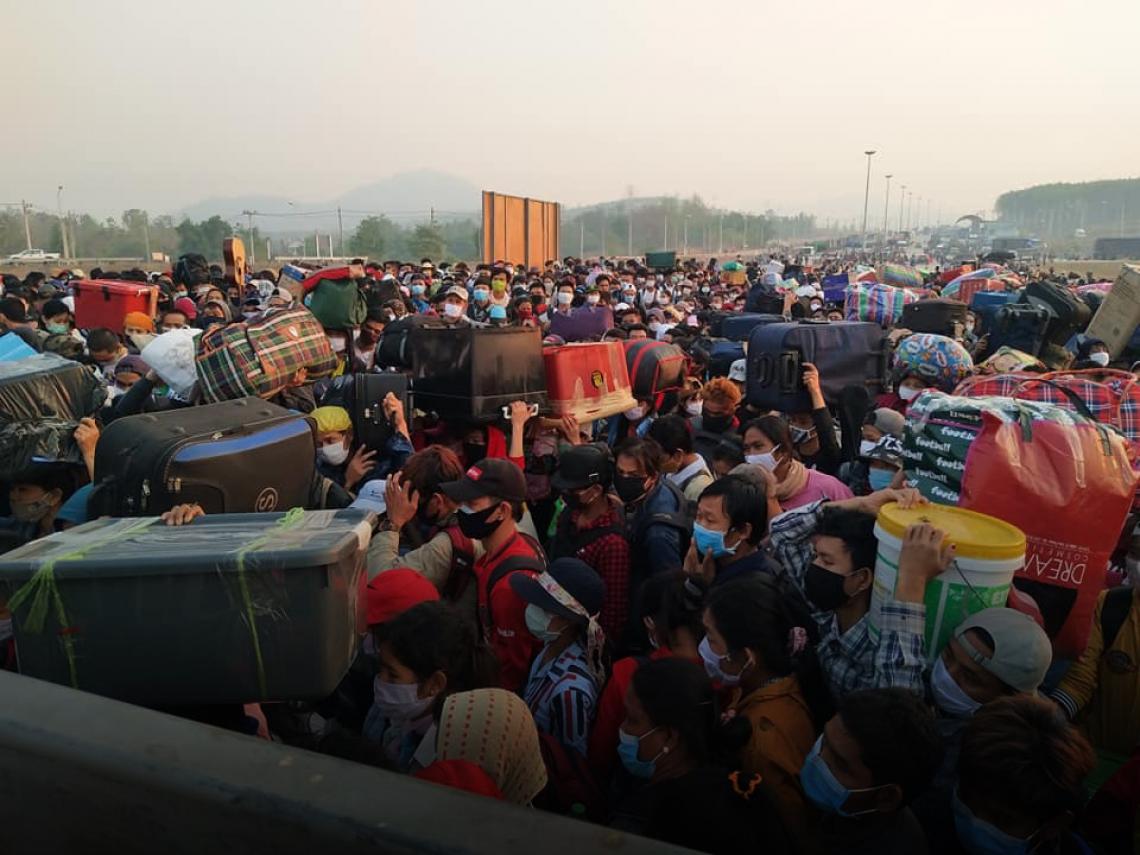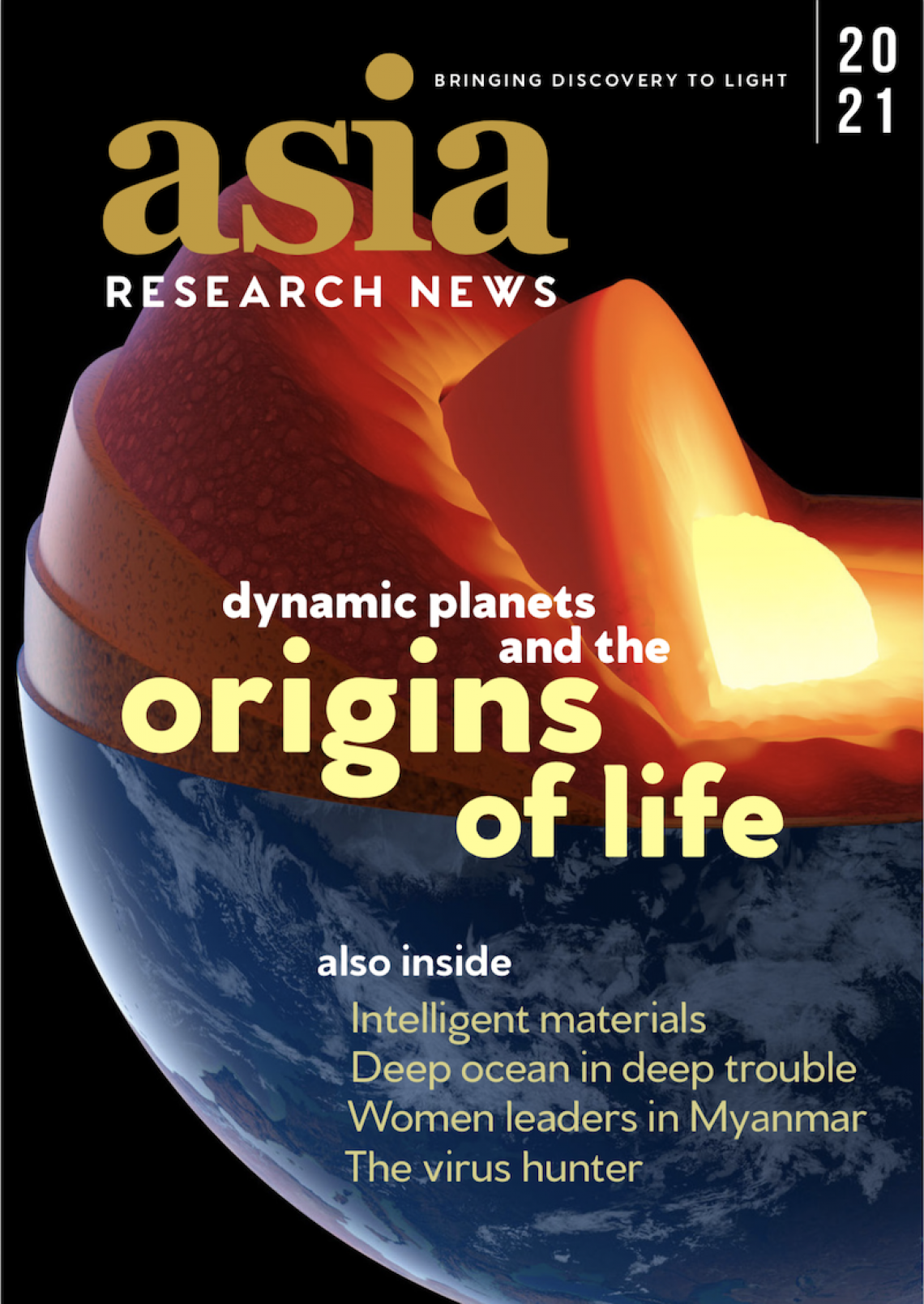This story is featured in the Asia Research News 2021 magazine. Read in ISSUU (above) or full text and images below.
3D PPE & DISINFECTING LIGHT
At the outset of the pandemic, researchers immediately set to work developing innovative protective equipment and efficient disinfecting techniques to help keep medical workers and the general public safe.
City University of Hong Kong researchers produced lowcost graphene face masks, which are made by turning a material like paper into graphene.
For example, City University of Hong Kong researchers produced low cost, anti-bacterial graphene facemasks that are more environmentally friendly than conventional surgical ones. The team used a CO2 infrared laser to turn a raw material like paper into graphene. The resulting 3D graphene pores have an initial anti-bacterial efficiency of 80% that is enhanced to almost 100% with exposure to sunlight for about ten minutes. Early tests showed the masks deactivated two types of coronavirus. They are also reusable and biodegradable.
In February 2020, Hong Kong Polytechnic University mobilised all its 3D printers to 24-hour-a-day operation to produce eye and face shields for frontline medical personnel in the region. They then partnered with local industry to scale up manufacturing of the shields, which were specifically designed to provide a better fit for the local populace.
Meanwhile, Hiroshima University researchers in Japan provided the first proof that ultraviolet-C light at a wavelength of 222nm effectively kills SARS-CoV-2. Far-UVC at this wavelength poses minimal health risks to human skin or eyes, making it a promising disinfectant for occupied public spaces, such as patient rooms in hospitals and clinics.
Lingnan University researchers in Hong Kong are using a different ultraviolet-C wavelength to disinfect public spaces. The 253.7nm wavelength is harmful to human eyes and skin, so they have created a autonomous disinfecting robot that can get the job done without people being present.
TRACKING THE SPREAD
No one particularly likes the brain tickle of the nasopharyngeal COVID-19 test swabs. Scientists at Hokkaido University and colleagues compared the test results of nasopharyngeal swabs and saliva samples of almost 2,000 people in Japan who did not have COVID-19 symptoms. They found that viral loads in saliva correlated with loads from nasal passages and had comparable sensitivity rates, suggesting self-collected saliva samples could offer an easy and effective mass testing approach for detecting asymptomatic COVID-19.
A*STAR researchers simulated how droplets spread through the air when an unmasked person coughs and people are standing 1 metre apart.
Wastewater monitoring can help track the large scale spread of the COVID-19 pandemic. This technique has previously been used for detecting non-enveloped viruses in wastewater. A Hokkaido University researcher and colleagues developed a fast, economical method for detecting the enveloped SARS-CoV-2 virus in untreated wastewater and have since partnered with industry to implement an automated analytical system.
Researchers at The Chinese University of Hong Kong (CUHK) provided free stool sample testing for children arriving in the region as a safer, easier alternative to swab tests. They detected asymptomatic infection in several young children through this program. They also found the viral infection persists in the gut even after it has cleared from the nose and throat.
Besides physical tests, teams around the globe have employed the power of big data, machine learning and algorithms to track the pandemic’s spread.
In Singapore, researchers at The Agency for Science, Technology and Research (A*STAR) teamed up with the National Supercomputing Centre to model the dispersion of droplets when a person coughs and is not wearing a mask. The supercomputer simulation took Singapore’s humid, tropical environment into account to produce more accurate estimates.
Students at the Ulsan National Institute of Science and Technology released a real-time map that tracks COVID-19 cases in their region in South Korea. Researchers in Malaysia and the U.K. led by Universiti Malaya developed a COVID-19 Research Information Super Hub, collating research findings into one centralized database to make it easier for both scientists and policy makers to stay abreast of the latest findings and track emerging trends.
A Tohoku University review directs future investigators where to focus their energy to make wearable virus sensors a reality.
Computer scientists at Hong Kong Baptist University used a model to forecast COVID-19 cases and economic losses based on different reopening scenarios in five cities in China, to help policy makers determine when to ease social distancing and quarantine measures. Also, researchers at The Hong Kong University of Science and Technology developed a smartphone app paired with a Bluetooth wristband to automatically monitor patients under quarantine and alert officials if they left their homes prematurely, helping save limited human resources.
In the future, researchers envision wearable or integrated sensors will detect viral particles in the air. However, development of such devices has not made much progress in the past decade. A recent review of the field by a Tohoku University materials engineer in Japan aims to show up-and-coming investigators where they can focus their energy. No doubt the pandemic will increase interest in this area.
THE IMMUNE RESPONSE, VACCINES & TREATMENTS
The wildly diverse reactions to SARS-CoV-2 infection, from no symptoms at all to severe illness and death, have been a distinct feature of the pandemic. Researchers have made rapid progress understanding the risk factors associated with severe illness and what is going on at the molecular level.
For example, Hokkaido University researchers investigated the pathways that trigger the so-called cytokine storm associated with acute respiratory distress syndrome (ARDS) that can lead to death. Identifying the pathways that spark devastating inflammatory responses can provide potential targets for drug interventions.
The immune system is closely linked to microbes that live in our intestines. CUHK researchers found several good bacteria missing in the guts of COVID-19 patients, compared with healthy controls. Using big data analysis, machine learning and data from the Chinese population, they developed a probiotic formula that aims to restore the balance between good and bad gut bacteria, and thus help boost the immune system.
Duke-NUS Medical School researchers determined some of the molecular mechanisms enabling bats to carry viruses without getting sick themselves.
While the source of SARS-CoV-2 has not yet been confirmed, many experts suspect it likely originated in bats, much like SARS-CoV-1, MERS and Ebola. Scientists from Duke-NUS Medical School in Singapore discovered some unique molecular mechanisms that enable bats to carry such viruses without getting sick themselves. Notably, bats appear to balance the activity of key immune and inflammatory proteins, allowing them to minimize some of the detrimental consequences of immune activation.
Tohoku University immunobiologists found that, as the pandemic wore on and the virus mutated, certain mutations led to more inflammation -- and it’s partly our fault. Our bodies, as part of our natural defence system, appear to have edited the viral RNA in such a way that it does more harm than good.
Also, as the pandemic has progressed, researchers have been able to examine how well innate and vaccine-induced antibodies work against the coronavirus. Scientists from Duke-NUS Medical School, Singapore’s National Centre for Infectious Diseases and A*STAR’s Infectious Diseases Labs found that antibodies against SARS-CoV-2 wane at different rates, lasting for mere days in some individuals, while forecasted to remain present in others for decades. The results suggest annual vaccinations might be needed for some individuals to reduce the impact of future COVID-19 outbreaks.
Researchers at Kyoto University’s Institute for Integrated Cell-Material Sciences (iCeMS) and colleagues developed an approach to find new adjuvants, which are key vaccine ingredients.
Many vaccines include ingredients called adjuvants to boost the immune response. Identifying potential adjuvants is now easier, thanks to an approach developed by scientists at Kyoto University’s Institute for Integrated Cell-Material Sciences (iCeMS) and colleagues. The team scanned libraries of small molecules that self-assemble into larger structures and found a new possible contender for a vaccine adjuvant.
THE FALLOUT & SILVER LININGS
The pandemic has had a profound impact in terms of lives lost, as well as the way we live and work. Quarantine, lockdowns, work from home and social distancing are here to stay until the pandemic is under control.
The crisis has taken its toll, with one in three adults experiencing anxiety, depression or other psychological distress, according to a meta-analysis from Duke-NUS Medical School that spanned 19 countries and nearly 300,000 study participants. The analysis revealed women, younger adults and those of lower socioeconomic status were more likely to be affected.
Migrant workers streamed back to Myanmar when the first lockdowns were implemented in neighbouring Thailand.
Social scientists, including teams supported by Canada’s International Development Research Centre, have found women have borne an increased burden throughout the pandemic, especially already-vulnerable migrant workers throughout Southeast Asia. Social scientists are also evaluating the effectiveness of policies and responses. Institutes like SEAJunction have called for policies that do a better job taking cultural and social context into account, and SHAPE-SEA encourages social scientists to share their expertise, particularly observations about how human rights are being threatened during the pandemic.
While lockdowns and quarantines have been brutal socially and economically, there have been some silver linings. An IOP Publishing study reported modest drops in NO2 air pollution following the lockdown in China, but not in the most fine particles that pose the greatest threat to human health, providing evidence to guide future reduction strategies.
Now that most of us have been working from home for more than a year, many commuters see the benefits. A Lingnan University survey found more than 80% of Hong Kong workers wouldn’t mind working from home at least one day a week after the pandemic is over.
THANK YOU, SCIENTISTS
Across the disciplines, the scientific community’s efforts and open collaboration to tackle this global crisis has been nothing short of incredible. As we write this in April 2021, a variety of vaccines are being deployed in many countries, even as variants spread, new lockdowns are announced, and scientists continue racing to develop the next generation of vaccines and treatments. While not over yet, the tireless work of so many researchers has rapidly accelerated us towards effective solutions, making us better prepared for the next pandemic and a healthier future.


